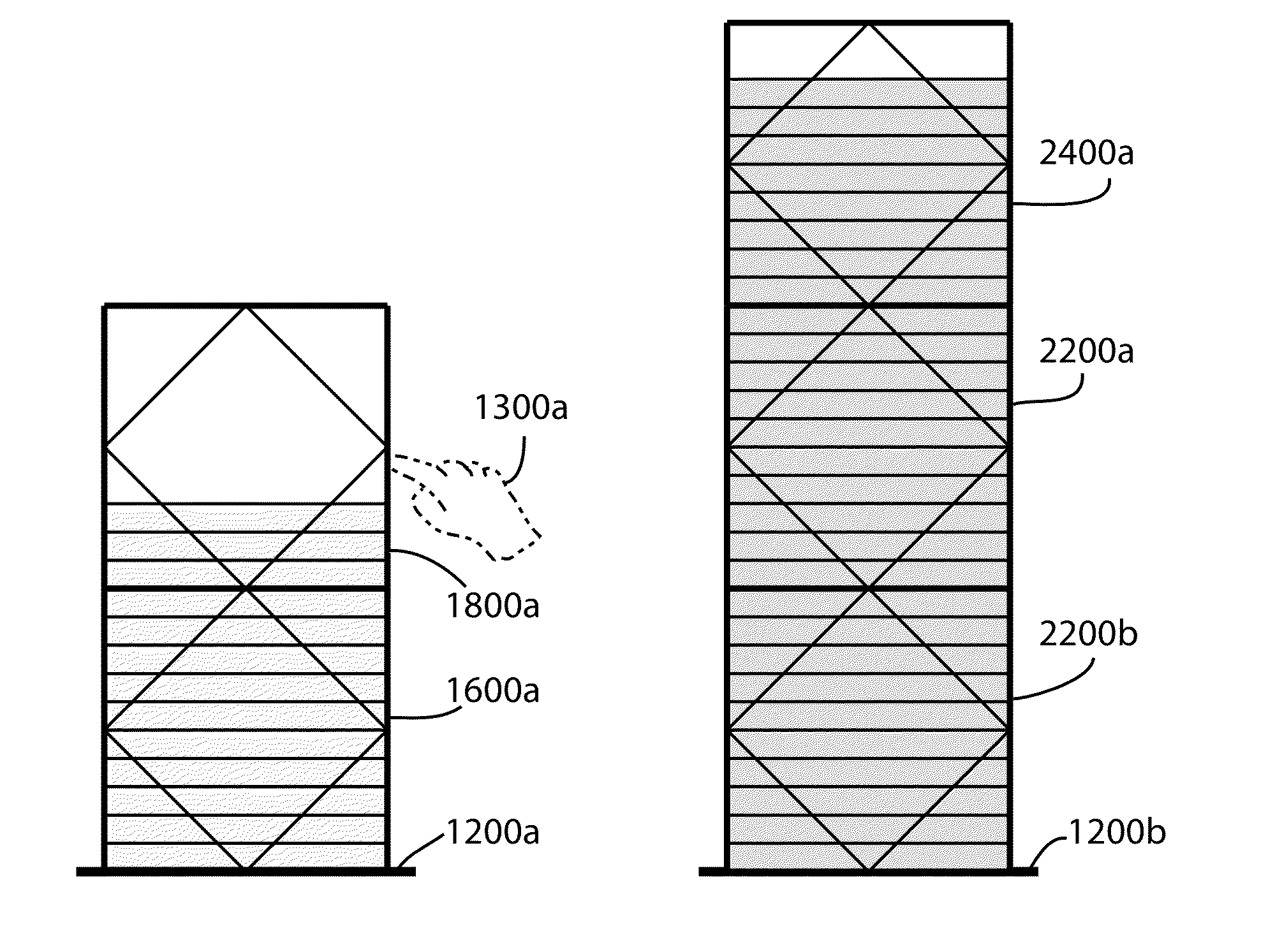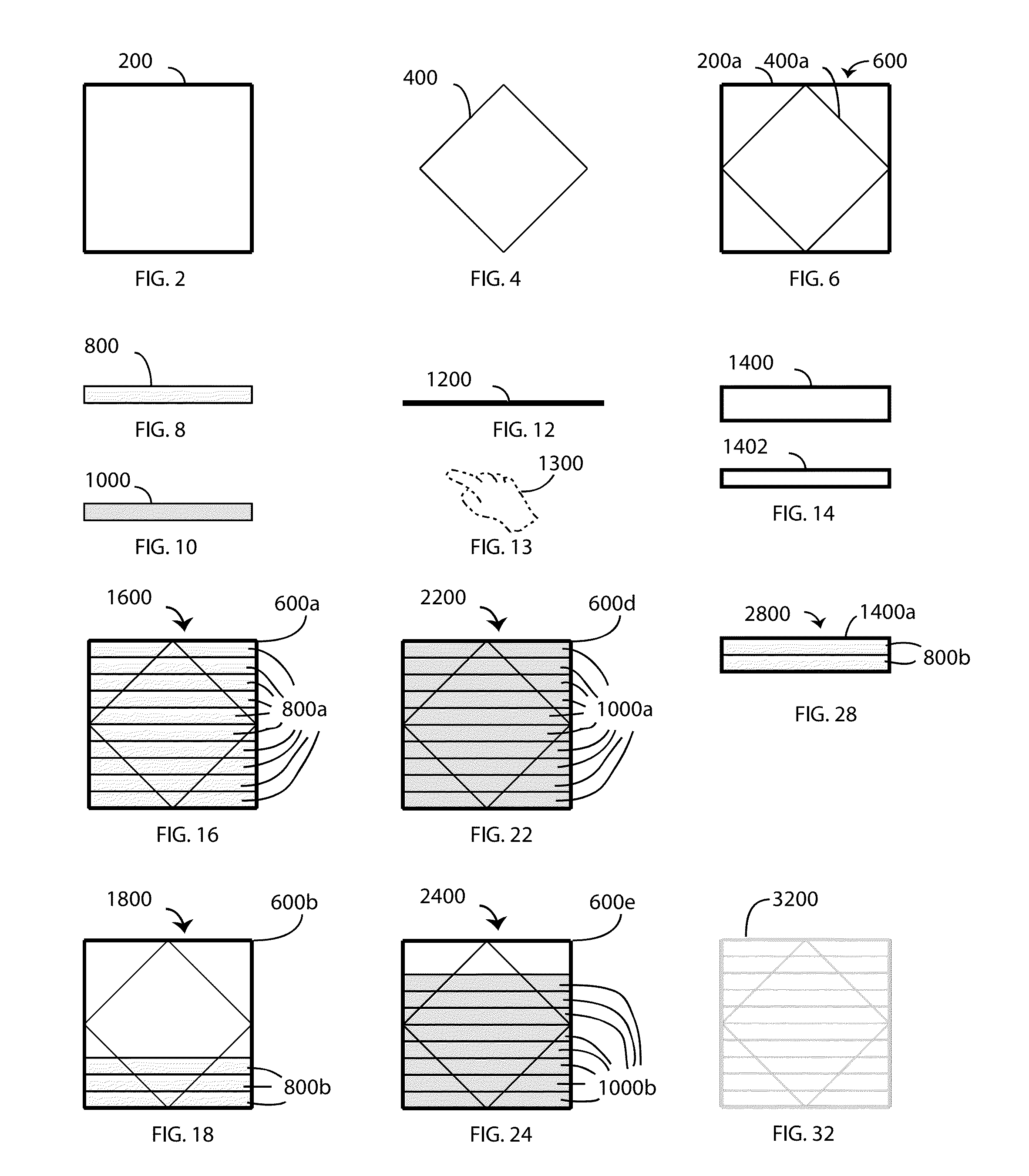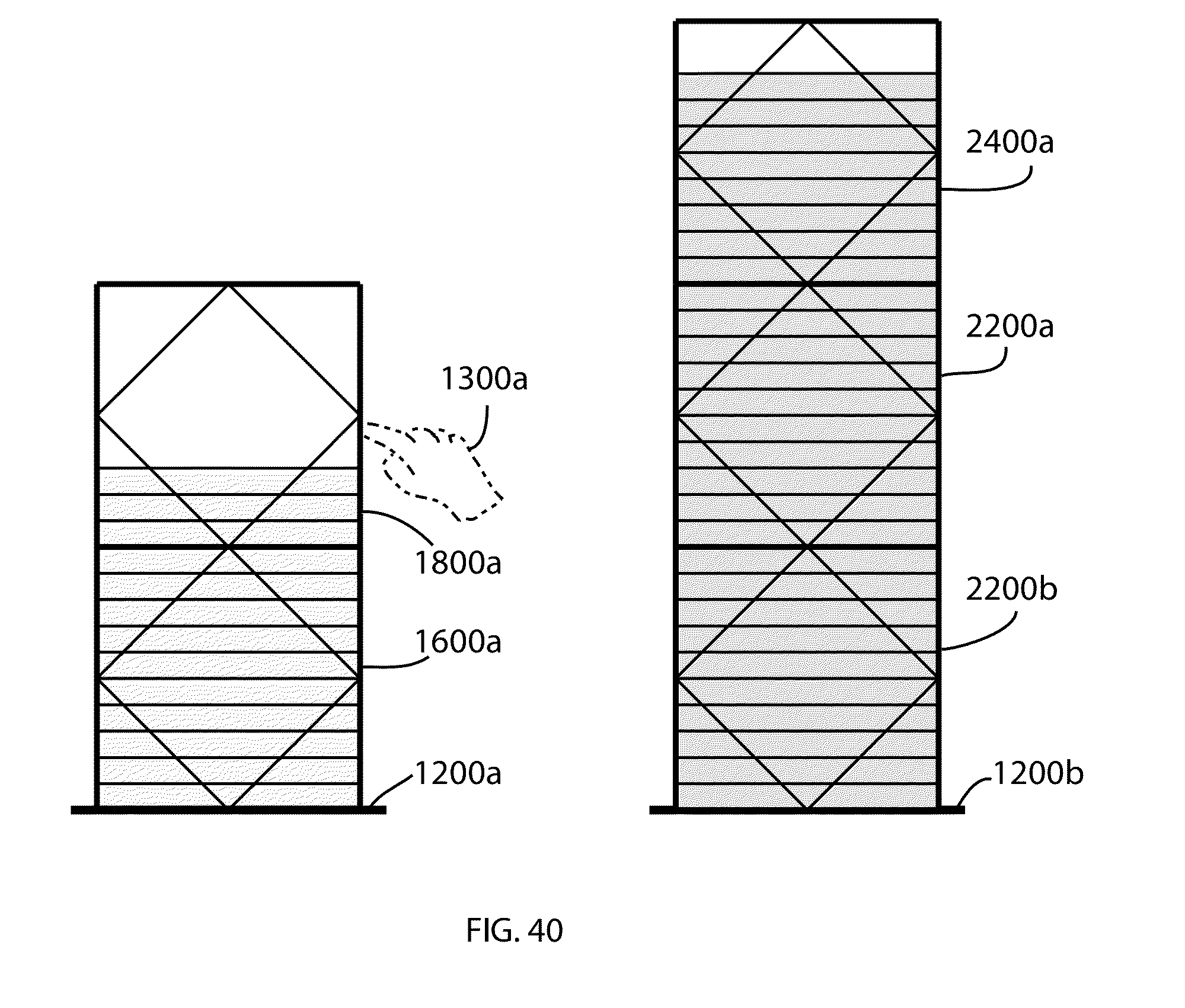Pile Manipulation Game
a game and game technology, applied in the field of game and game, can solve the problems of not being able to intuitively explain why, the grouping is not very intuitive, and the relationship is not very satisfactory, so as to facilitate counting, quick to understand the relationship, and soften the rigid periodical nature of the grouping.
- Summary
- Abstract
- Description
- Claims
- Application Information
AI Technical Summary
Benefits of technology
Problems solved by technology
Method used
Image
Examples
first embodiment
The First Embodiment
[0102]FIG. 2 shows an mvCrateDelimiter 200. An mvCrateDelimiter is a graphical representation of a delimiter / container that can hold an integer number of mvBars (See descriptions of FIG. 8 and FIG. 10). An mvBar is an approximately rectangular (shaped graphical-) object.
[0103]FIG. 4 shows an mvCountHelper 400. An mvCountHelper is a count helper, a graphical shape that is used to facilitate counting of any mvBars that are confined inside an mvCrateDelimiter.
[0104]FIG. 6 shows an mvCrate 600. An mvCrate comprises an mvCrateDelimiter 200a, such that it can hold mvBars. Furthermore, it comprises an mvCountHelper 400a, which overlays any mvBars within the mvCrateDelimiter.
[0105]FIG. 8 shows a specific mvBarTenth 800 which has a light color. An mvBarTenth is an mvBar of which an amount of 10 can be stacked, approximately filling up an mvCrate (as is shown in FIG. 16).
[0106]FIG. 10 shows a specific mvBarTenth 1000 with a dark color. By the use of different colors, it is...
PUM
 Login to View More
Login to View More Abstract
Description
Claims
Application Information
 Login to View More
Login to View More - Generate Ideas
- Intellectual Property
- Life Sciences
- Materials
- Tech Scout
- Unparalleled Data Quality
- Higher Quality Content
- 60% Fewer Hallucinations
Browse by: Latest US Patents, China's latest patents, Technical Efficacy Thesaurus, Application Domain, Technology Topic, Popular Technical Reports.
© 2025 PatSnap. All rights reserved.Legal|Privacy policy|Modern Slavery Act Transparency Statement|Sitemap|About US| Contact US: help@patsnap.com



